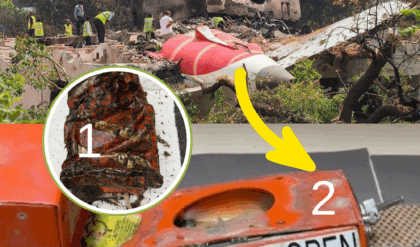As officials are still examining the cause of last week’s deadly Air India Flight A171 crash in Ahmedabad, India, investigators suspect the Boeing aircraft’s emergency power system was possibly operational before the crash, according to a report.
Citing sources close to the probe, The Wall Street Journal reported on Wednesday, June 18, that the plane’s emergency-power generator was likely activated ahead of the fatal incident.

The finding has prompted officials to speculate about whether the London-bound Boeing Dreamliner’s engines were working shortly after takeoff from Ahmedabad’s Sardar Vallabhbhai Patel International Airport on June 12.
PEOPLE contacted Air India and Boeing for comment about the Journal’s report. GE Aerospace, an engine manufacturer, deferred to Britain’s Air Accidents Investigation Branch (AAIB) for comment.
The emergency power system is defined as a ram air turbine (RAT), according to the report, and described as a small propeller that drops from the plane’s fuselage and acts as a backup generator.
The RAT provides power that allows the plane’s vital components to function and is automatically deployed in flight when the plane’s engines fail or hydraulic system pressures reach low levels, the Journal further reported, citing a Boeing 787 manual.
The disaster killed 241 people aboard the plane and left one survivor. At least 29 people were killed on the ground, according to the Associated Press.
Seconds after taking off, the cockpit relayed a mayday call to air traffic control, CNN reported. Video footage viewed by the BBC showed the plane being airborne for just 30 seconds before it plummeted to the ground.
An official cause of the disaster has not been revealed, but investigators confirmed to ABC News that two black boxes from the crash site were recovered.
“This marks an important step forward in the investigation,” Ram Mohan Naidu Kinjarapu, the Indian union minister of civil aviation, said, according to the BBC. “This will significantly aid the enquiry into the incident.”
In a June 13 statement, India’s Ministry of Civil Aviation announced it is creating a committee to investigate the disaster, promising to assess “the root cause of the crash” and “contributing factors, including mechanical failure, human error, weather conditions, regulatory compliances and other reasons.”
“The Committee will examine the existing Standard Operating Procedures (SOPS) and guidelines issued to prevent and handle such occurrences and suggest comprehensive guidelines for dealing with such instances in the future,” per the ministry’s statement.
Sources close to the probe told the Journal that, despite the preliminary finding, the investigation is continuing.
Meanwhile, Air India issued a statement Wednesday announcing that the airline is reducing international services on widebody aircraft by 15% in the wake of the crash, “to ensure stability of operations, better efficiency and minimise inconvenience to passengers.” The cuts will remain in effect until at least mid-July.
“Air India remains in mourning on the tragic loss of 241 passengers and crew members aboard flight AI171. Our hearts are with the families, loved ones, and communities affected by the accident,” the airline said in the same statement.
